
http://www.iaeme.com/IJM/index.asp 83 editor@iaeme.com
International Journal of Management (IJM)
Volume 8, Issue 3, May–June 2017, pp.83–90, Article ID: IJM_08_03_008
Available online at
http://www.iaeme.com/ijm/issues.asp?JType=IJM&VType=8&IType=3
Journal Impact Factor (2016): 8.1920 (Calculated by GISI) www.jifactor.com
ISSN Print: 0976-6502 and ISSN Online: 0976-6510
© IAEME Publication
IMPACT OF SOCIO DEMOGRAPHIC FACTORS
INFLUENCE ON BENEFICIARIES OF
JANSURAKSHA SCHEMES
Rajitha Ramachandran
Research Scholar, Bharathiar University, Coimbatore
Assistant Professor, Presidency College, Bengaluru
Dr. Anuradha P S
Associate Professor, Christ University, Bengaluru
ABSTRACT
Prime minister’s recent introduction of new social security schemes to ensure
insurance and pension for all remains a laudable step. These schemes were launched
on May 9, 2015 and are expected to enhance welfare of citizens, especially workers in
unorganized sector. The schemes are Pradhan Mantri Suraksha Bima Yojna
(PMSBY), an ultra-low cost accident insurance scheme, a life insurance scheme,
Pradhan Mantri Jeevan Jyoti Bima Yojana (PMJJBY), and Atal Pension Yojana
(APY), a contributory pension scheme with defined benefit outgo. This study gives a
view of the factors that affect various socio demographic factors related aspects that
leads to influence the buying behavior by a policy beneficiary of a particular scheme..
It also discusses about the variation in motivational factors due to demographic
differences. The study is focused on the consumers belonging to Bengaluru city. A
wide range of research in this area was referred to review the work done by various
researchers, which lead to the development of research framework. The statistical
tools used in the research paper are descriptive statistics, regression analysis etc.
Key words: Jansuraksha schemes. Socio demographic factors, significant.
Cite this Article: Rajitha Ramachandran and Dr. Anuradha P S, Impact of Socio
Demographic Factors Influence on Beneficiaries of Jansuraksha Schemes.
International Journal of Management, 8 (3), 2017, pp. 83–90.
http://www.iaeme.com/IJM/issues.asp?JType=IJM&VType=8&IType=3
1. INTRODUCTION
India’s tryst with micro insurance and micro-pensions is older than most initiatives across the
globe. Right from the days of public sector insurance (1960s-1999) through the periods of
privatization and regulation (post 2000), providing insurance for low-income segments has
always remained a major agenda of discussion for the government and insurers alike.
According to latest estimates, India accounts for more than 42% of global micro insurance

Rajitha Ramachandran and Dr. Anuradha P S
http://www.iaeme.com/IJM/index.asp 84 editor@iaeme.com
coverage. In addition, several social micro insurance products already cover nearly 316
million Indians. This includes a range of life, health and agriculture insurance schemes aimed
at low income segments with premiums fully subsidized by the government. The country's
insurance penetration is 3.9 per cent of gross domestic product and these schemes are
expected to give a needed push to this. According to a Swiss Re study, life insurance
penetration was 3.1 per cent and non-life insurance was 0.8 per cent, as of end-March 2014.
The government has launched three social security schemes. The schemes two insurance
products and one pension product are targeted especially to the un organised sector and
economically weaker population but others can enrolled themselves as well. The new life
insurance plan the Pradhan Mantri Jeevan Jyoti Bima Yojana will offer Rs 2 lakh cover at Rs
330 premium every year. Bank account holders in the age 18 to 50 years are eligible to take
this facility. The life risk cover will get terminated after 55 years. Pradhan Mantri Suraksha
Bima Yojana will offer a renewable one year accidental death cum disability cover of Rs 2
lakh at Rs 12 premium every year. The insured will get Rs 1 lakh in case of partial permanent
disability. Multiple bank account holders are eligible to join the schemes through any one of
the savings accounts. Atal Pension Yojana is for the people in the unorganised sector who are
outside a formal pension net so far. The pension scheme would allow subscribers of age 18 to
40. Under this scheme, subscriber will get guaranteed minimum pension from the age of 60.
The pension could be Rs 1000, Rs 2000, Rs 3000, Rs 4000 or Rs 5000 per month, depending
on the size of contribution
2. REVIEW OF LITERATURE
Dr Rupali Satsangi & Ms Namrata Anand ( 2016) have studied that mi products have a huge
potential but the demand is mismatched with the needs of the target groups and the supply is
grossly influences the suppliers and have studied that there should be customized MI products
to cater the needs of the specific people. Bakshi Priti ( 2016) in her study on the Review of
Progress and Potential MI in India highlights the importance of insurance in supporting the
sustainable development of the poor and have mentioned lots of importance for Lot of efforts
to be done to improve the scheme. The development is both moral and economic imperative
for inclusive growth. Dr sneha Shukla (2015) in her study have analysed the various reasons
for low penetration and have identified it due to lack of awareness that prevails, though NGO
active participation and lack of efforts from insurance industry. Ramalakshmi and
Ramalingam ( 2014) have identified that agents are identified as a major role in creating
awareness which in turn have benefited in creating more customer base in the organizations.
SINGH PP and Miglani Shweth (2012) looked into the awerness of micro insurance products
where majority of the respondents are aware of MI, Life insurance is most sought out and
pension insurance the least.Public sector companies are the most sought out. Insurance
providers only 2/3 are inactive participation and the shortfalls can be overcome by providing .
Special schemes should be launced, which should be linked to internet, IRDA to take the
steps, advertisements in local language, transparency by giving to local post offices, attractive
rate of returns and grievance handling cells to be made
Singh Siddhant & Patel B Nalubhai (2012) on the reserearch title “The demand of Micro
Insurance in Ahmedabad district” be conculded through the study that MI can cover the risk
and is an effective risk management tool and the role of sHG and government is minimal with
less participation Linkages among MFI and provide education and information links. Singh
Ms Kirthi and Gangal Vijay ( 2011) studied the importance of MI for the upliftment and
alleviation of poverty, by understanding intitatives taken by private and public insurance
companies for growth of rural india and MI to an extend has been experimental for the
upliftment and provide intiatives for the growth of rural india. IRDA intiatives to ensure
insurers to develop their own MI products and fulfil rural obligations, improve the awareness

Impact of Socio Demographic Factors Influence on Beneficiaries of Jansuraksha Schemes
http://www.iaeme.com/IJM/index.asp 85 editor@iaeme.com
among low income group. To induct more and more trained people and develop distribution
channel
3. NEED AND RATIONALE FOR THE STUDY
Very less study have been done on the motivating factors which aims to evaluate the
motivating factors which affects and triggers the buying behavior of an beneficiary for micro
insurance .Thus, the focus is on the socio demographic factors from the perspective of
beneficiary and how it influences the beneficiary towards purchase of micro insurance
schemes.. This study will be helpful to know whether socio demographic factors affect the
motivational factors of an beneficiary of a micro insurance scheme. It will be also useful for
the researchers and practioners studying the same issue.
4. OBJECTIVES OF THE STUDY
1. To analyze the motivational factors for the purchase of jansuraksha scheme.
2. To study the impact of socio-demographic factors on the motivating factors for the
purchase of jansuraksha scheme
5. RESEARCH METHODOLOGY
Descriptive research design has been used in this study. Samples are being collected from the
beneficiaries of the Jansuraksha scheme within the universe of bengaluru city. Proportional
sampling method was used wherein the entire universe is divided into four talukas namely
Anekal, Bengaluru north, Bengaluru South and Bengaluru East. The sample size is 250
respondents, belonging to the policy holders from each of these taluka And who have availed
all three schemes under Jansuraksha scheme namely Pradhan Mantri Jeevan Jyothi Bima
Yojana, Pradhan Mantri Suraksha Bima Yojana and Atal Pension yojana
The motivational factors is measured on an 5 item scale (Vanessa and Marlene 2005). The
factors which determines the motivational factors are low premium, policy term, Accidental
cover, Sum assured, Long term benefit, Government scheme and social security. The various
socio demographic factors which are been considered in the research are Age, Gender, Martial
status and educational background. These factors describe the overall demographic
characteristics of a individual beneficiary
Table 1 Details of Demographic Factors
Factors Variables Frequency Percentage(%)
AGE
18-25 YEARS 56 22
26-35 YEARS 117 47
36-45 YEARS 67 27
45-60 YEARS 10 4
GENDER Male 176 70
Female 74 30
MARTIAL STATUS
Married 164 66
Unmarried 78 31
widower/widow 6 2
Divorced 2 1
EDUCATION
Illterate 33 13
SSC 94 38
HSC 65 26
Graduation 33 13
Post graduation 25 10
TOTAL 250 100

Rajitha Ramachandran and Dr. Anuradha P S
http://www.iaeme.com/IJM/index.asp 86 editor@iaeme.com
Interpretation
It can be intrepretated from the above table that majority of the beneficiaries are from the age
group of 26-35 years which shows that the working class have invested more in this
government scheme. Male beneficiaries are majority policy holders around 70%. Most of the
beneficiaries are married individuals and have family which is dependent on the group.. It is
also being intrepretated that majority of the respondents are literate with basic education of
SSC and are doing temporary or technical job to carry out their work .
5.1. Descriptive Statistics
Respondents were asked to rate the each factors based on the scale that best suits them. The
scale of the opinions was as follows 1- Very high 2- High, 3- Neutral, 4- Low and 5- Very
low
Table 2 Low premium as a motivational factor
Frequency Percent Valid Percent Cumulative Percent
Valid 1 25 10.1 10.1 10.1
2 148 58.9 59.1 69.2
3 29 11.3 11.3 80.6
5 48 19.4 19.4 100.0
Table
6
Sum assured as a motivating factor
Frequency Percent Valid Percent Cumulative Percent
Valid 1 44 17.7 17.7 17.7
2 91 36.7 36.7 54.4
3 89 35.9 35.9 90.3
4 24 9.7 9.7 100.0
Table 3 Policy term as a motivational factor
Frequency Percent Valid Percent Cumulative Percent
Valid 1 70 28.2 28.2 28.2
2 64 25.8 25.8 54.0
3 102 41.1 41.1 95.ti2
4 12 4.8 4.8 100.0
Table
4
Accidental cover as a motivational factor
Frequency Percent Valid Percent Cumulative Percent
Valid 1 16 6.5 6.5 6.5
2 100 40.3 40.3 46.8
3 97 39.1 39.1 85.9
4 16 6.5 6.5 92.3
5 19 7.7 7.7 100.0
Table 5 Accessability as a motivating factor
Frequency Percent Valid Percent Cumulative Percent
Valid 1 16 6.5 6.5 6.5
2 112 45.2 45.2 51.6
3 92 37.1 37.1 88.7
4 16 6.5 6.5 95.2
5 12 4.8 4.8 100.0

Impact of Socio Demographic Factors Influence on Beneficiaries of Jansuraksha Schemes
http://www.iaeme.com/IJM/index.asp 87 editor@iaeme.com
Table 9 Social security as a motivating factor
Frequency Percent Valid Percent Cumulative Percent
Valid 1 47 19.0 19.0 19.0
2 125 50.4 50.4 69.4
3 48 19.4 19.4 88.7
4 24 9.7 9.7 98.4
5 4 1.6 1.6 100.0
Total 248 100.0 100.0
Intrepretation
It can be summarized from those above descriptive analysis that all motivational factors are
highly agreed upon by 60% of the respondents and very less no of respondents have disagreed
the same. It shows that majority of the respondents have considered all the 8 factors as
motivational factors and are considered highly reliable.
5.2. Regression Analysis
Hypothesis:
H
0
- All socio demographic factors do have an equal impact on motivational factors which
influence the buying behavior of an scheme
H
I
- All socio demographic factors do not have an equal impact on motivational factors which
influence the buying behavior of an scheme
Table 7 Long term benefit as a motivating factor
Frequency Percent Valid Percent Cumulative Percent
Valid 1 83 33.5 33.5 33.5
2 84 33.9 33.9 67.3
3 65 26.2 26.2 93.5
4 8 3.2 3.2 96.8
5 8 3.2 3.2 100.0
Table
8
Government scheme as a motivating factor
Frequency Percent Valid Percent Cumulative Percent
Valid 1 48 19.4 19.4 19.4
2 88 35.5 35.5 54.8
3 88 35.5 35.5 90.3
4 20 8.1 8.1 98.4
5 4 1.6 1.6 100.0
Total 248 100.0 100.0



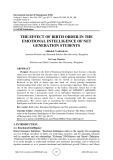
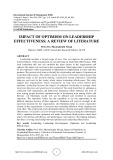
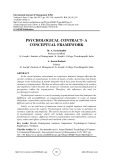
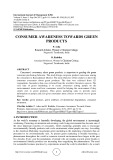
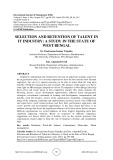

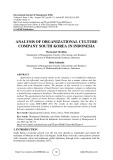
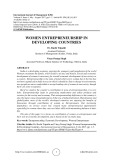


![Câu hỏi ôn tập Tâm lý học quản lý [chuẩn nhất]](https://cdn.tailieu.vn/images/document/thumbnail/2025/20251125/hathunguyen04er@gmail.com/135x160/25191764124376.jpg)
![Cẩm nang chăm sóc và nuôi dạy trẻ tăng động giảm chú ý [chuẩn nhất]](https://cdn.tailieu.vn/images/document/thumbnail/2025/20251118/kimphuong1001/135x160/4241763431998.jpg)


![Sổ tay Hướng dẫn tự chăm sóc trầm cảm [chuẩn nhất]](https://cdn.tailieu.vn/images/document/thumbnail/2025/20251029/kimphuong1001/135x160/3711761720335.jpg)
![Đề cương Tâm lý học xã hội [chuẩn nhất]](https://cdn.tailieu.vn/images/document/thumbnail/2025/20251028/c.dat0606@gmail.com/135x160/99271761707421.jpg)
![Câu hỏi ôn thi Nhập môn khoa học nhận thức [chuẩn nhất]](https://cdn.tailieu.vn/images/document/thumbnail/2025/20251021/aduc03712@gmail.com/135x160/48471761019872.jpg)

![Đề cương môn Tâm lý học sinh tiểu học [chuẩn nhất]](https://cdn.tailieu.vn/images/document/thumbnail/2025/20251007/kimphuong1001/135x160/51781759830425.jpg)



![Tâm lí học lứa tuổi và sư phạm ở tiểu học: Bài thuyết trình [chuẩn nhất]](https://cdn.tailieu.vn/images/document/thumbnail/2025/20250918/vuhoaithuong14@gmail.com/135x160/90941758161117.jpg)
